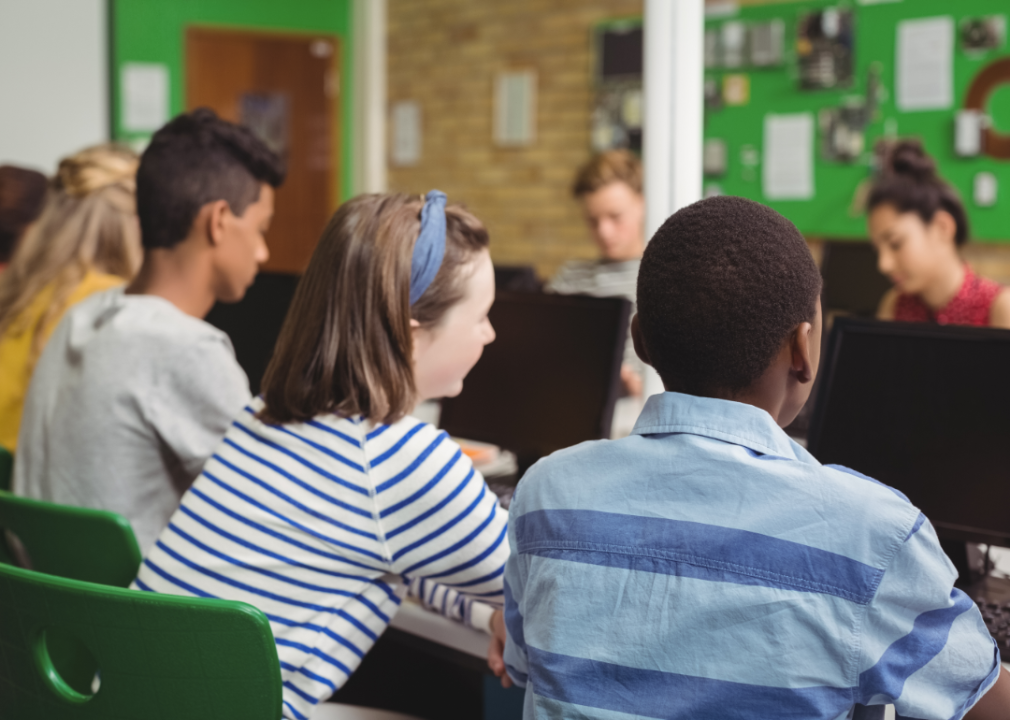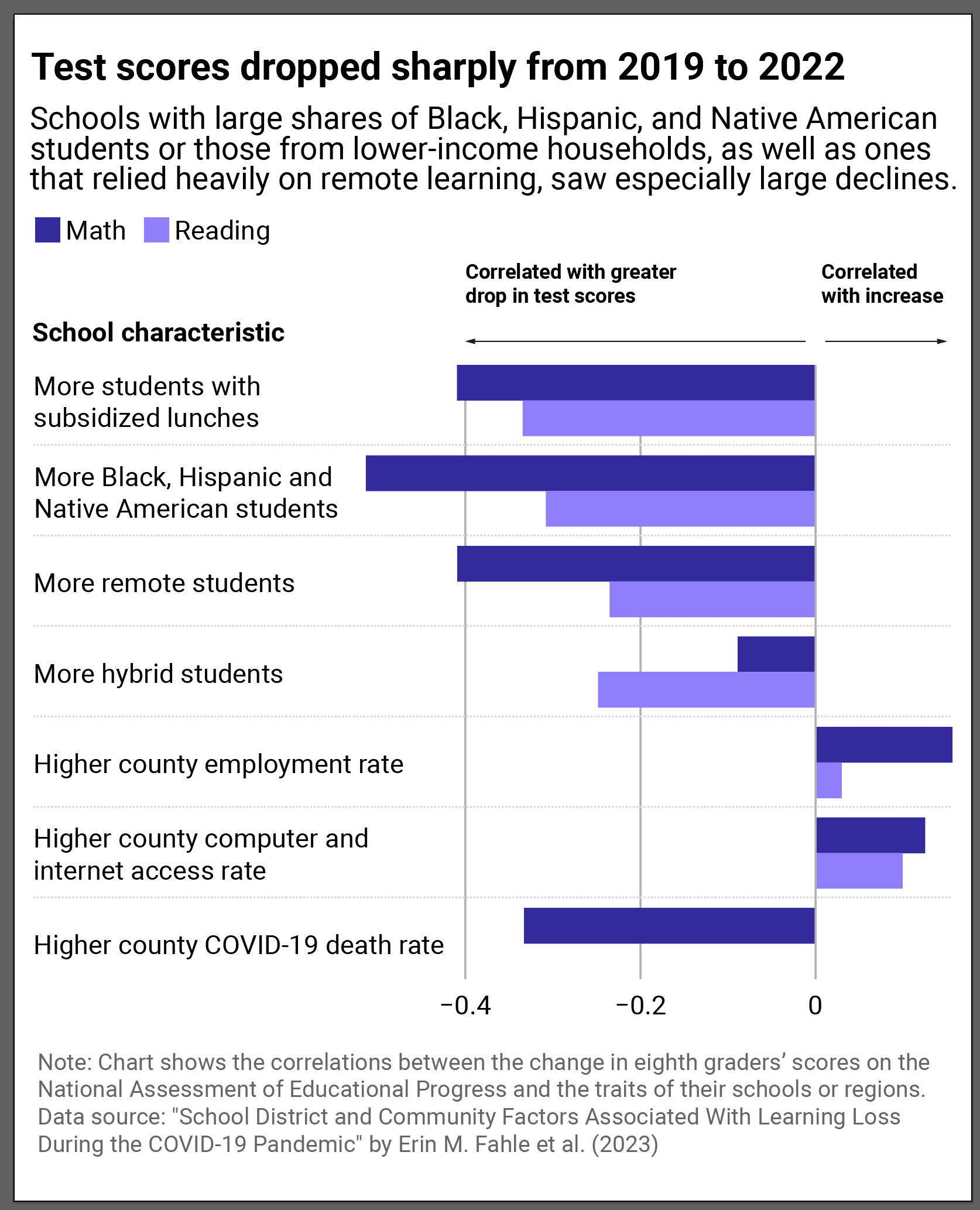What kinds of schools fared the best and worst during the pandemic?

Canva
What kinds of schools fared the best and worst during the pandemic?
A group of students viewed from behind in a classroom setting.
Since the COVID-19 pandemic, eighth-grade test scores fell by three-fourths of a grade in math and one-fourth of a grade in reading, according to findings from the National Assessment of Educational Progress, the largest representative testing tool in the United States.
Potential factors contributing to this learning loss include schools being ill-equipped for the pandemic shift, limited resources, and disparities in computer and broadband access among students. Additionally, COVID-19 death rates and employment losses may have either correlated with school closures or mediated effects on disadvantaged students.
To learn more about learning loss during the pandemic, HeyTutor looked at the robust “School District and Community Factors Associated with Learning Loss During the COVID-19 Pandemic” report, released in May 2023 by the NWEA (formerly the Northwest Evaluation Association). While the NWEA’s primary analysis looked at math and reading test scores in 2016, 2019, and 2022 for students in third through eighth grade, HeyTutor’s examination focused on test scores of primarily eighth-grade students in 2019 and 2022, as reflected on a congressionally mandated, standardized test administered by the National Center for Education Statistics.
Answering the “why” of COVID-19-related learning loss is complicated by racial contexts. Higher death rates, elevated unemployment rates, and increased rates of depression and anxiety for Black and Hispanic adults during the pandemic underscore COVID-19’s potentially compounding effects on student learning.
“The pandemic affected nearly every aspect of students’ lives,” NWEA’s report states, “[including] their school experiences, their social networks, their parents’ jobs and income, their mental health, among others.”
Lower-income and school districts with majority Black, Hispanic, and Native American populations, as well as school districts that operated with hybrid or remote schedules, experienced the most learning loss, the NWEA report shows. It highlights persistent inequities facing one of the world’s richest countries. Within school districts, however, white students and those who were not economically disadvantaged experienced roughly the same amount of learning loss as Hispanic and Black students and those from low-income households. This finding suggests that factors on a local or community level—such as economic conditions and internet access for example—affected student populations within districts similarly.
Columbia University’s Black Education Research Center advocates in its “Black Education in the Wake of COVID-19 and Systemic Racism” paper for more investments in mental health and counseling services to address racial trauma as part of post-pandemic education; professional development programs to help school leaders address the emotional, academic, and social needs of Black students; and more culturally competent educators serving in Black students.
![]()

HeyTutor
School districts eye emergency relief funds to stanch learning loss
A bar chart shows the traits of schools that saw the biggest test scores decline since the pandemic. Schools with lots of students who qualified for free lunches, schools with more minority students, as well as schools that relied on remote learning fared the worst.
With an eye toward glaring disparities in learning loss during COVID-19, school districts are tapping resources from the federal Elementary and Secondary School Emergency Relief fund to start to undo the damage. Tutoring initiatives, summer learning programs, and extended school days are just a few of the ways districts are using the funding—$22 billion of which is designated for tackling learning loss.
“From our perspective, these test-score drops in no way indicate that these students represent a ‘lost generation’ or that we should give up hope,” four NWEA employees wrote in a Brookings Institute commentary. “Most of us have never lived through a pandemic, and there is so much we don’t know about students’ capacity for resiliency in these circumstances and what a timeline for recovery will look like.”
Story editing by Nicole Caldwell. Copy editing by Kristen Wegrzyn.
This story originally appeared on HeyTutor and was produced and
distributed in partnership with Stacker Studio.